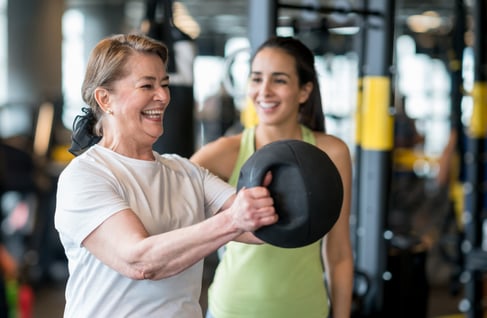 Autoimmune diseases are a family of more than 80 chronic illnesses. According to the National Institutes of Health, up to 23.5 million Americans, or more than 7 percent of the population, suffer from an autoimmune disease. Autoimmune disorders arise when the body’s immune system, which is meant to protect you from disease and infection, mistakenly attacks healthy cells as if they were invading a virus or bacteria. Autoimmune diseases include arthritis, ulcerative colitis, Crohn’s Disease, Graves’ disease, lupus, Sjögren’s syndrome, and multiple sclerosis. Some other illnesses that commonly affect women such as Fibromyalgia and Chronic Fatigue Syndrome (although not classified as autoimmune diseases) have similar symptoms including fatigue and chronic pain. Common symptoms of autoimmune diseases include chronic joint or muscle pain, extreme fatigue, difficulty sleeping, weakness, nausea, headache, and depression.
Autoimmune diseases are a family of more than 80 chronic illnesses. According to the National Institutes of Health, up to 23.5 million Americans, or more than 7 percent of the population, suffer from an autoimmune disease. Autoimmune disorders arise when the body’s immune system, which is meant to protect you from disease and infection, mistakenly attacks healthy cells as if they were invading a virus or bacteria. Autoimmune diseases include arthritis, ulcerative colitis, Crohn’s Disease, Graves’ disease, lupus, Sjögren’s syndrome, and multiple sclerosis. Some other illnesses that commonly affect women such as Fibromyalgia and Chronic Fatigue Syndrome (although not classified as autoimmune diseases) have similar symptoms including fatigue and chronic pain. Common symptoms of autoimmune diseases include chronic joint or muscle pain, extreme fatigue, difficulty sleeping, weakness, nausea, headache, and depression.
Staying Active Is Important
Many people with an autoimmune disease go through periods of being symptom-free, and then have sudden onset of severe symptoms called flares. It’s understandable that when you’re not feeling well, you may avoid exercise because it’s difficult to find the motivation and energy to be active. For many people with autoimmune disorders, however, moderate low-impact exercise and physical activity can be of tremendous benefit to their quality of life. Keeping active is especially important when you have an autoimmune disease for several reasons: exercise boosts physical energy; endorphin production is a natural painkiller; exercise can help reduce inflammation throughout the body; and exercise also helps combat the depression and anxiety that also often accompany this type of illness.
Exercise Tips for People with Autoimmune Disease
Here are some tips for exercising when you have an autoimmune illness:
- Go at your own pace and figure out what works for you. Not everyone’s experience of autoimmune disease symptoms is the same. Start slowly with your workouts and work your way up to more challenging ones. Some days will be harder than others—adjust your workout accordingly. If you miss a day because of a flare, don’t beat yourself up about it, just make sure you get back to the gym as soon as you can.
- Have good support systems. Talk to your health care providers about your plans to exercise and ask for their input. Make an appointment at your gym to have a fitness assessment with a personal trainer. You may also find it fun and motivating to have a fitness buddy other than your trainer, someone you can attend group classes with, or even just meet a designated time to hit the cardio machines or do weights together.
- Keep a journal of your daily activities, including when you exercise, the activities you did, and what you ate. If you find yourself overly exerted, you will probably see patterns start to emerge when you have the most or least amount of energy. Take these into consideration and adjust your routine to fit you best.
- Give your body the fuel it needs to succeed. You may even want to consider an anti-inflammatory diet. Many autoimmune disorders create inflammation in the body, which leads to muscle and joint pain, as well as fatigue. You can consult with a nutritionist to see whether there are diet changes you can make to help you be successful.
- Rest! Your body may have a hard time adjusting to the workload you are putting it through. Allow yourself to get adequate rest. Remember, this is a lifelong condition that requires lifelong attention.
This blog was written by Emily Lesich, NIFS Health Fitness Specialist. To learn more about the NIFS bloggers, click here.


 A question I get asked frequently is, “Why are you interning for a fitness center when your major is social work?” The first thing people think of when they hear social work is working at the Department of Child Services, and being in a fitness center doesn’t seem to make sense. But social work is so much bigger than that, and it continues to expand into new places, such as fitness and sports.
A question I get asked frequently is, “Why are you interning for a fitness center when your major is social work?” The first thing people think of when they hear social work is working at the Department of Child Services, and being in a fitness center doesn’t seem to make sense. But social work is so much bigger than that, and it continues to expand into new places, such as fitness and sports.
 What if I told you that I had a drug that could help cure the majority of your ailments, make your workday and life more productive, and help you sleep better? How much would you pay for this drug? But wait, there’s more! This drug can also
What if I told you that I had a drug that could help cure the majority of your ailments, make your workday and life more productive, and help you sleep better? How much would you pay for this drug? But wait, there’s more! This drug can also